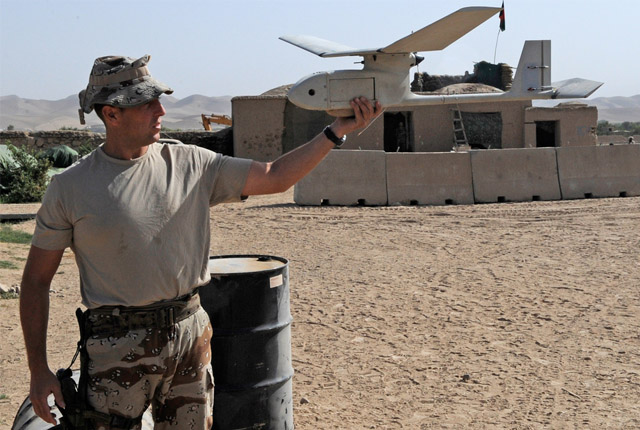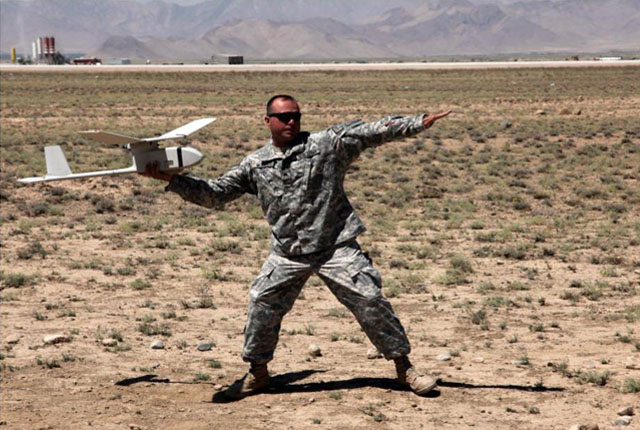For the foreseeable future, the United States will continue to take an active approach (…) directly striking the most dangerous groups and individuals when necessary.
The announcement leaves little room for interpretation. It is written in stone in the US Defense Strategy for 2012 released on January 5. “Directly striking the most dangerous groups and individuals.” That appears to have been the case earlier this month when, according to several accounts collected by Reuters, the US military used a drone strike to kill the leader of the Taliban in Afghanistan. A similar attack was carried out on a senior commander fighting with Shabab Islamic militants in Somalia last week. In Libya, the fleeing Gaddafi’s convoy was halted by a drone strike.
The statement further formalizes the “war on terror” Obama-style: targeted assassinations carried out by special forces and the CIA, outside of US territory, using drones. The same document continues:
As U.S. forces draw down in Afghanistan, our global counter terrorism efforts will become more widely distributed and will be characterized by a mix of direct action and security force assistance. Reflecting lessons learned of the past decade, we will continue to build and sustain tailored capabilities appropriate for counter terrorism and irregular warfare.
Gone are the days of “protracted stabilization operations on a global scale”. In their place, “tailored” and targeted strikes. According to The Bureau of Investigative Journalism, which is closely following the US drone war, 128 strikes were carried out in the Pakistani tribal regions in 2010, twice as many as in 2009. In 2007 just five drone attacks were recorded.
Blurring the battle lines
“The use of drones has been increasing since 2004. The United States were the first to use these unmanned aircraft, followed by the Israelis,” explains Michel Asencio, a researcher at the Fondation pour la recherche scientifique (FRS), a scientific research center in Paris. Today the US military has a fleet of several thousand drones, mostly used to carry out surveillance missions. 775 are equipped with offensive capabilities, including the Reaper and Predators.
The CIA has about 30 drones, mostly for surveillance, such as the RQ 170 which was captured by Iranian authorities in December last year.
This new war against terror blurs the lines between civilian and military. That ambiguity was evidenced by the musical chairs last June at the head of the main US security and defense institutions. Leon Panetta, CIA Director until June 2011, was then appointed Secretary of Defense. “It was a way for Obama to put a Democrat figure of trust at the head of the army,” believes Nicole Vilboux, a specialist in US military doctrine and a researcher associated with the FRS. “The US Army is generally distrustful of Democratic presidents, even if Obama is given more credit than Bill Clinton was,” she says.

Following his departure from the CIA, Panetta has been replaced by General David Petraeus, formerly the commander responsible for the Middle East, CENTCOM and the NATO International Security Assistance Force (ISAF) where he had succeeded Stanley McChrystal. McChrystal had been forced out for publicly criticizing President Obama and US strategy in Afghanistan.
These appointments illustrate the strategy chosen by the Obama administration, embodied in the use of drones in the tribal areas of Pakistan, as well as in Yemen and Somalia. “In all likelihood the operators of drones, the technicians, are military personnel,” suggests Nicole Vilboux. The program of strikes is kept secret; little to no information gets out about targeted killings. And for good reason: the CIA are granted permission to carry out covert operations by executive order.
The CIA and JSOC
Officially, the drone strike program does not exist. The White House and CIA refuse to discuss or confirm the existence of strikes. The Washington Post reports that the drone program involves a combination of intelligence agencies and special forces under the command of the Joint Special Operations Command (JSOC). Anwar Al-Awlaki, a member of Al Qaida in the Arabian Peninsula (AQAP), was killed on September 30 of last year in Yemen by a CIA-ordered drone attack. Two weeks later, also in Yemen, a strike planned by the JSOC killed his 16 year old son.
“Barack Obama’s entourage strongly supports the use of drones, especially his counter-terrorism adviser John Brennan and Secretary of State Hillary Clinton,” explains Nicole Vilboux. In the case of clandestine CIA operations, it falls to the president to give the final green light, without having to justify that action to the public.
This new type of war is designed to avoid damaging headlines about the death of US soldiers. “The use of drones is based on a new economy of war, one that emerged after the wars in Algeria and Vietnam. The death of soldiers has become intolerable to Western societies. The drone is the perfect tool: they are unmanned and do not expose the soldiers,” says Gerard Chaliand, a specialist in Afghanistan.
Post-traumatic stress
In 2025, combat drones are expected to make up one third of the American fleet, bringing their number to more than 9,000. “The pilots are replaced by machines to a large extent,” continues Michel Asencio. “But they are not entirely independent. A human being is involved in the programming before the flight, and in remotely flying the drone.” Recent studies have shown that pilots of drones suffered from the same post-traumatic symptoms as fighter pilots:
Imagine a special forces agent who drops her children off to school at 8am, goes to work, eliminates some insurgents from more than 8000 km away and goes home again in the evening!
The new Predators, nicknamed Avengers, will be powered by engines allowing them to reach more than 600 km/h, compared to the 100 to 130 km/h that propeller drones are capable of today.
Targeted killings of members of Al Qaida, some of whom are US citizens, are illegal under international law, adds Nicole Vilboux. “Washington claims it is acting in legitimate self-defense.“ Operations inside Pakistani territory were denounced by authorities in Islamabad as violations of its territorial sovereignty. At least 53 non-combatant casualties were recorded in Pakistan in 2011.
The infographic below outlines the number of recorded drone strikes in Pakistan, the number of deaths reportedly caused by CIA drone strikes, and the number of civilian “non-combatant” deaths reportedly caused by drone strikes since 2004. It was created by Enora Denis from data provided by the Bureau of Investigative Journalism and originally published in Le Jeu de l’Oie. Adapted into English by Owni.eu.

Photos: Flickr CC Isaf Media (BY)
Follow @pierre_alonso on Twitter




















